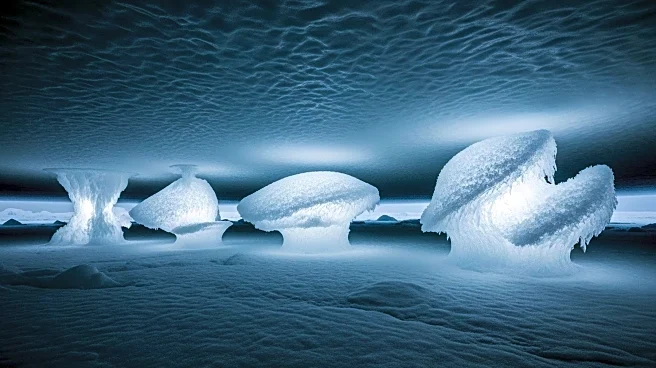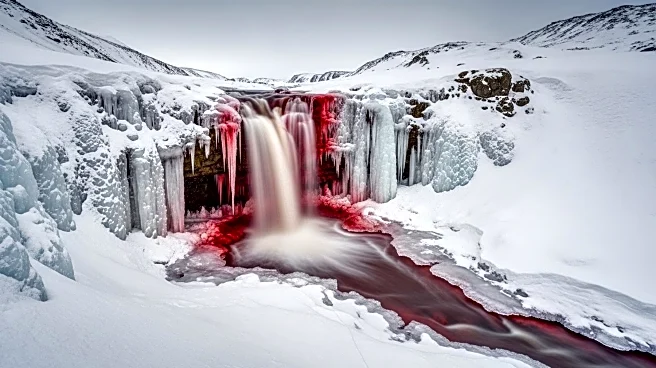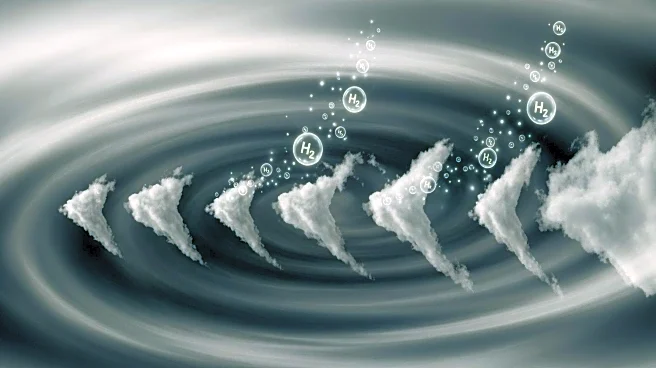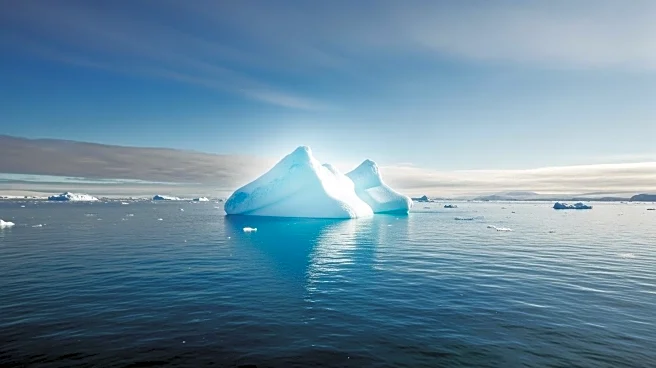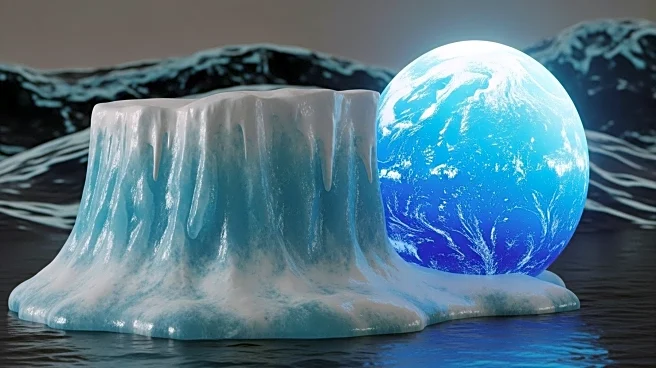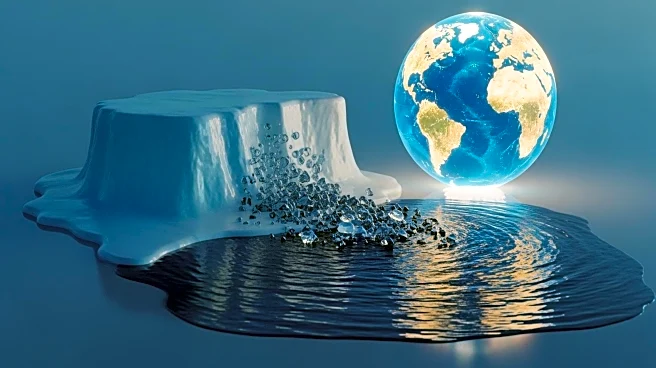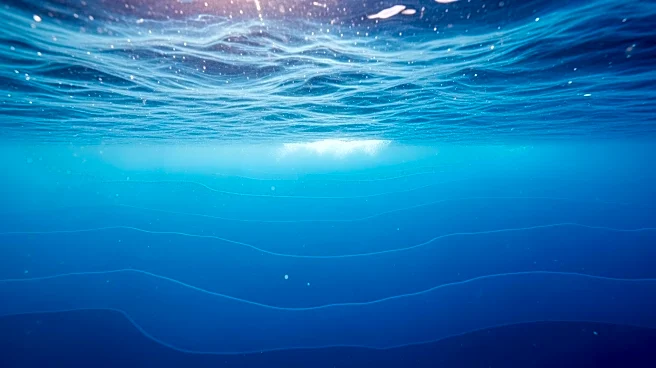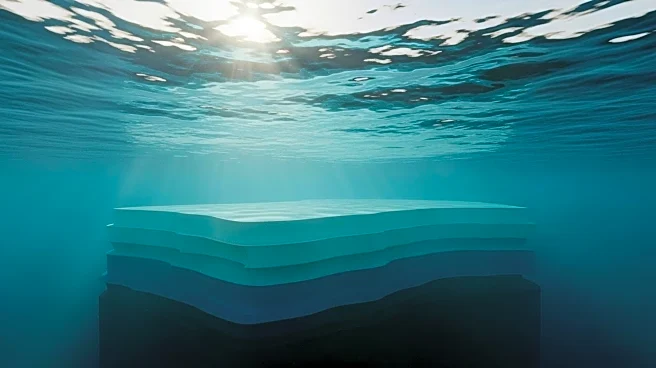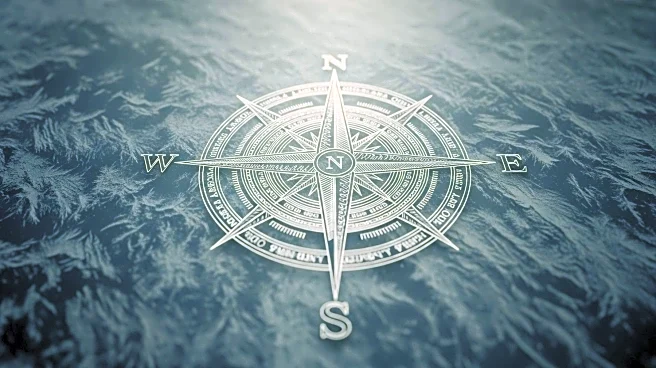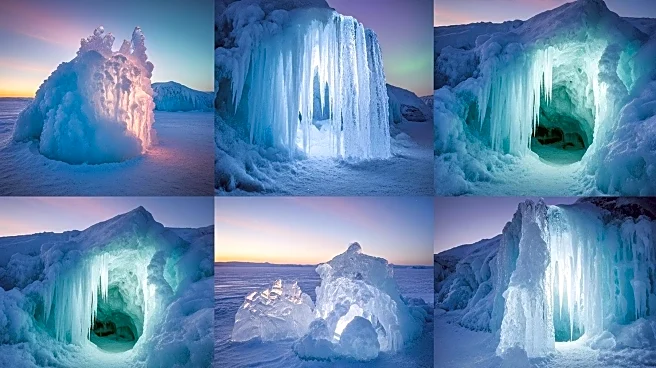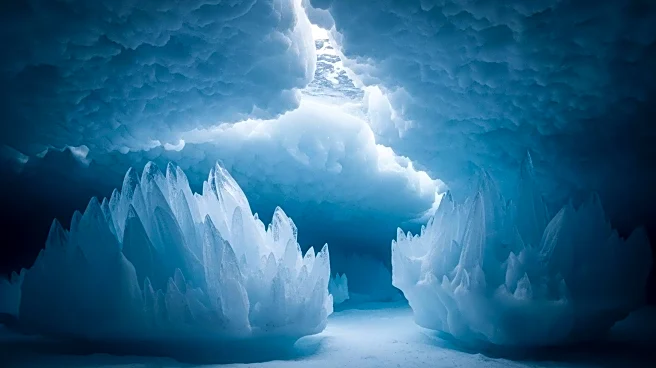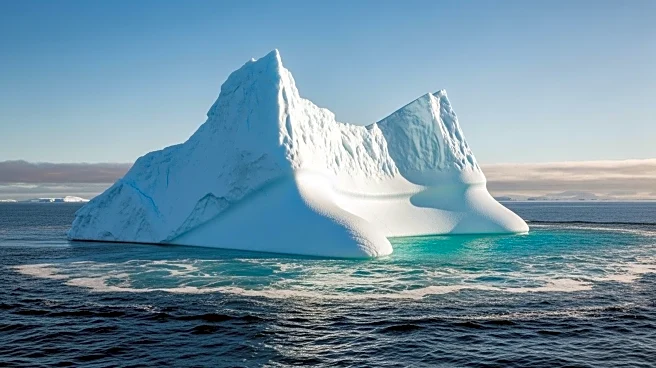What is the story about?
What's Happening?
Scientists have discovered massive 400-meter structures beneath the Dotson Ice Shelf in West Antarctica, sparking a scientific debate about ice shelf melting processes. Using a robotic submersible named Ran, researchers mapped an extensive under-ice landscape featuring ridges, channels, and teardrop-shaped formations. These features, sculpted by ocean currents and heat, provide new insights into how warm water infiltrates and erodes ice shelves from below. The findings challenge existing models of ice shelf dynamics and have significant implications for understanding sea-level rise.
Why It's Important?
The discovery of these structures is crucial for improving predictions of sea-level rise, as ice shelves act as barriers that slow the flow of inland glaciers into the ocean. Understanding the processes that lead to ice shelf thinning is essential for accurately forecasting future sea-level changes. The data collected by Ran highlights the need to incorporate under-ice processes into climate models, which could refine projections and inform global climate policy. As sea levels continue to rise, these insights are vital for coastal communities and policymakers planning for future impacts.
What's Next?
The scientific community is expected to focus on further exploration and analysis of the Dotson Ice Shelf and similar regions. Future missions with next-generation submersibles will aim to track the evolution of these structures over time and assess their impact on ice shelf stability. The integration of these findings into climate models will be a priority, as researchers seek to enhance the accuracy of sea-level rise projections and inform global climate strategies.
AI Generated Content
Do you find this article useful?
